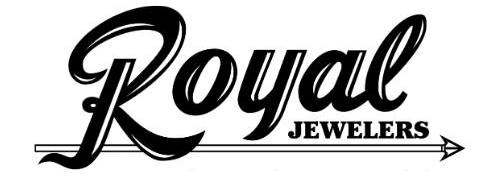Understand the 4Cs of Diamond Quality
This basic knowledge will not only unlock the mystery of a diamond’s quality, it will help you understand a diamond’s value and price.
Diamond Color In most diamonds, the term actually refers to the absence of color. The less color in the stone, the more desirable and valuable it is. Some of these differences are not visible to the naked eye, but directly impact the overall quality and price of the stone.
Diamond Clarity measures the amount, size and placement of internal ‘inclusions,’ and external ‘blemishes.’ Grades run from ‘Flawless,’ with virtually no imperfections, to ‘Included,’ which contain a significant number of imperfections.
Diamond Cut does not refer to a diamond’s shape, but to the proportion and arrangement of its facets and the quality of workmanship. The amount of brilliance, sparkle and fire in a diamond is determined by cut. Grades range from ‘Excellent’ to ‘Poor.’
Diamond Carat refers to a diamond’s weight. Generally speaking, the higher the carat weight, the more expensive the stone. Two diamonds of equal carat weight, however, can have very different quality and price when the other three Cs are considered.
No matter how beautiful a diamond may look you simply cannot see its true quality. The 4Cs of diamond quality will provide you with the information you need to know the diamond’s actual quality.
Before GIA universalized the D-to-Z Color Grading Scale, a variety of other systems were used loosely, from A, B, and C (used without clear definition), to Arabic (0, 1, 2, 3) and Roman (I, II, III) numbers, to descriptive terms like “gem blue” or “blue white,” which are notorious for misinterpretation. So the creators of the GIA Color Scale wanted to start fresh, without any association with earlier systems. Thus the GIA scale starts at the letter D. Very few people still cling to other grading systems, and no other system has the clarity and universal acceptance of the GIA scale.
No. Naturally colored diamonds outside the normal color range are called fancy-color diamonds. The FTC provides no guidelines for the use of the term “fancy-color” in the US, but there is general agreement in the international trade that fancy-color diamonds are either yellow or brown diamonds that have more color than a Z masterstone or they exhibit a color other than yellow or brown.
Like the color scale, GIA’s clarity grading system developed because jewelers were using terms that could be misinterpreted, “loupe clean” or “piqué™.” Today, even if you buy a diamond somewhere else in the world, the jeweler will most likely use terms like VVS1 or SI2, even if his or her language is French or Japanese instead of English.
The distance from the bottom of the girdle to the culet is the pavilion depth. A pavilion depth that’s too shallow or too deep will allow light to escape from the side of the stone or leak out of the bottom. A well-cut diamond will direct more light through the crown.
Can we help?
The Lazare Diamond’s 4’c Interactive Player



